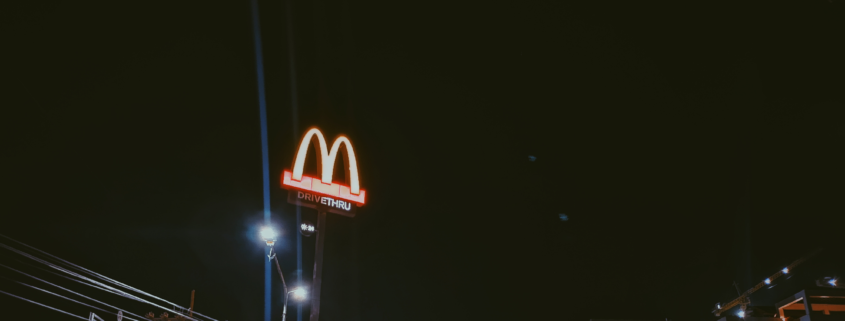I am sure if a survey was taken of physical preparation coaches the majority would say there goal was to be the best they can be. From my perspective, I suggest that is not the dominant focus. I suggest that the desire to be like everyone else is far greater than the desire to be the best one can be. And I suggest that the price paid for this default is lost opportunities for both the professional and the client.
During the 1970s very few people participated in the exercise know as the squat, or double knee bend. The belief was squats were bad for your knees. Did the majority come to that conclusion based on their personal experiences, or did they simply accept the dominant beliefs and habits?
During the 1980s the majority of mixed energy sports athletes participated in a higher volume aerobic training block in their General Preparatory Phase. The belief was that it was neither safe or optimal to expose the athlete to other training modalities without first gaining a level of aerobic fitness. Did the majority come to that conclusion based on their personal experiences, or did they simply accept the dominant beliefs and habits?
During the 1990s the majority of physical preparation coaches included Swiss ball exercise in their program design. The belief was that performing an exercise, any – actually vertically all – exercises. This was based on the dogma that the additional balance challenges produced a superior training effect, and that this was definitely going to transfer to all sport and life activities. Did the majority come to that conclusion based on their personal experiences, or did they simply accept the dominant beliefs and habits?
During the 2000s the majority of physical preparation coaches selected almost exclusively from the so-called ‘functional exercises’ (although I am not really sure what that is) in their program design. To do any exercise sitting on a bench or lying down was heretical. This was based on the belief that standing and multi-planar movements were superior in their training effect for all people at all times, and would definitely provide a superior transfer to sport and life. Did the majority come to that conclusion based on their personal experiences, or did they simply accept the dominant beliefs and habits?
During the 2010s the majority of sports coaches and physical preparation coaches refuse to use static stretching, replacing what little stretching time is dedicated to stretching with ‘dynamic’ stretches. This is based on the belief that static stretching makes you weak and leads to injury and dynamic stretching is safer, more functional and effective. Did the majority come to that conclusion based on their personal experiences, or did they simply accept the dominant beliefs and habits?
The one question I asked throughout the above is – Did the majority come to that conclusion based on their personal experiences, or did they simply accept the dominant beliefs and habits? I suggest they did not come to these conclusions based on any form of personal experience. I also suggest that they didn’t even think. They just accepted and did.
So what would I need to see to believe that a physical preparation coach was making an attempt to be the best they can be? The most important criteria I am looking for is evidence of thinking. That the key questions have been asked, including but not limited to;
• What is the best way to train?
• What can I do to fulfill my potential as a coach?
• What can I do to fulfill the potential of my client/athlete?
Now call me simplistic, but I am skeptical as to whether the majority has applied this approach. Here are a few considerations.
Let’s take squats for examples. Prior to about 1990, when a slew of ‘research’ was published extolling the benefits of stretching, did the did the majority of physical preparation coaches have collective personal experiences that squatting was bad and then collectively and coincidentally post 1990 have personal experiences to the contrary?
Let’s take the Swiss ball for example. Prior to about 1990 few knew the word Swiss ball and exercises upon it. Up until this time did the did the majority of physical preparation coaches have collective personal experiences that Swiss balls and exercises on Swiss balls were useless and then collectively and coincidentally post 1990 have personal experiences to the contrary?
Let’s take stretching for example. Prior to about 1995 it was okay to statically stretch, and commonly done. Post 1995 it wasn’t. Now did the majority of physical preparation coaches have collective experiences prior to 1995 that static stretching was the most effective way to stretch, and then post 1995 all reach personal conclusions to the contrary? I suggest not. Now I respect that for many of you my proposition is flawed as I place a premium on thinking, at a time in the world and in our industry where the dominant belief that what you think is irrelevant – just read the research and see if ‘research supports it’. This is essentially not only the antithesis of thinking, I also suggest that this don’t think just believe in the research mentality is actually contrary to the intent of the origin of science.
For me objectivity is the key.
Scientific objectivity is a characteristic of scientific claims, methods and results. It expresses the idea that the claims, methods and results of science are not, or should not be influenced by particular perspectives, value commitments, community bias or personal interests, to name a few relevant factors.
And even though science claims this I don’t believe it is always the case.
Science in theory is intended to provide objective analysis. I believe this way has been lost in many cases, where the research conclusions are influenced by the researcher, who in turn may be influenced by the provider of the funding.
For all the lip service we pay to science, everyone knows that it is commerce that runs the show. As the Spanish proverb goes, ‘He who gives the bread lays down the law’. Science today typically serves the large corporate interests that fund it. In a world conceived by the financial and corporate leadership who effectively rule it, the purpose of the human being is to contribute to the economy as an increasingly efficient unit of production and as an increasingly efficient unit of consumption. The financial and corporate elite establish effective social policy, and commercially funded science gives them the technological wherewithal to execute it. –Laurence G. Boldt, 1999
I believe you can be more objective than certain modern ‘scientific’ conclusions:
Now I admit it’s not easy being an objective thinker. Throughout history thinkers have been subject to a variety of suppressions and restrictions by authorities.
Take Roger Bacon (c. 1219/20 – c. 1292) for example, the 13th Century English philosopher. He is sometimes credited (mainly since the 19th century) as one of the earliest European advocates of the modern scientific method inspired by Aristotle
• After 1260, Bacon’s activities were restricted by a statute prohibiting the friars of his order from publishing books or pamphlets without prior approval. • The Condemnations of 1277 banned the teaching of certain philosophical doctrines, including deterministic astrology. Some time within the next two years, Bacon was apparently imprisoned or placed under house arrest. –https://en.wikipedia.org/wiki/Roger_Bacon
Here are some of the thinking that Bacon and others were ‘not allowed to engage in’ at various times in the 13th Century:
The banned propositions included:
• “That there is numerically one and the same intellect for all humans”.
• “That the soul separated [from the body] by death cannot suffer from bodily fire”.
• “That God cannot grant immortality and incorruption to a mortal and corruptible thing”.
• “That God does not know singulars” (i.e., individual objects or creatures).
• “That God does not know things other than Himself”.
• “That human acts are not ruled by the providence of God”.
• “That the world is eternal”.
• “That there was never a first human”.
–https://en.wikipedia.org/wiki/Condemnations_of_1210–1277
History is littered with examples of suppression of freedom of thinking. Now if you are still reading this article, and if you resonate with the belief that you should reach your own, objective conclusions, then here is one phenomenal role model to guide and inspire you. Buckminster-Fuller, considered one of the greatest thinkers of the 20th Century, wrote:
I jettisoned all I had ever been taught to believe and proceeded thereafter to reason and act only on the basis of direct personal experience … Exploring, experiencing, feeling, and – to the best of my ability – acting strictly and only on my individual intuition, I became impelled to write this book… –Buckminster-Fuller, referring to his book ‘Critical Path’, 1981.
I am not alone in my encouragement to you to temper your compliance with the dominant ‘scientific’ theories:
I think that in modern Western society, there seems to be a powerful cultural conditioning that is based on science. But in some instances, the basic premises and parameters set up by Western science can limit your ability to deal with certain realities. For instance, you have the constraints of the idea that everything can be explained within the framework of a single lifetime, and you combine this with the notion that everything can and must be explained and accounted for. But when you encounter phenomena that you cannot account for, then there’s kind of a tension created; it’s almost a feeling of agony. –Howard C. Culter and the Dalai Lama, 1998
Again I share I am not seeking to be disrespectful of science as it currently is.
Research is nice and I’m definitely not critical at all of the contribution of academics. But my decision to train a certain way is not based on the latest research. It’s based on the conclusions I’ve reached on cause and effect relationships in the real world. People can become too infatuated with the concept of science.
For me, success in sport is about winning. Athletes aren’t going to get offended if I don’t comply with the latest research. They just want to win. So the research is nice, but it’s always going to be limited. We’re not dealing with a college age volunteer in a six week program; we’re dealing with a human being that’s been working for fifteen to twenty years to take his body beyond where it’s gone before. –Shugart, C., 2000, Meet the press: Coach of Coaches – An interview with Ian King, t-mag.com 29 Friday 2000
I also acknowledge that the easiest thing to do is to conform. However I encourage you to reflect on this perspective on conformity:
The opposite of courage in our society is not cowardice, it is conformity. –Rollo May
I have been encouraging you to resist the pressures of conformity for:
Resist the temptation in program design to conform to mainstream paradigms simply for the sake of conforming, no matter how dogmatically they are presented, or how much you may be ridiculed or ostracized for trusting your intuition over conformity. Make our own minds up based on a combination of respect for your intuition, the athlete/client’s intuition, the results, and in respect of the body of knowledge available. –King, I.., 2005, The way of the physical preparation coach (book), p. 17
It is rewarding to see individuals chose to be objective, to trial training methods and reach their own conclusions, even if they are contrary to the dominant beliefs:
“…from young, I was led to believe that an individual’s level of flexibility is determined by genetics. As I grew older I got stiffer and when I started my formal education, I was educated that flexibility is not a vital determining factor in sports and that dynamic stretches were more than sufficient to both warm-up the joint and muscles, as well as to improve flexibility.
To be honest, with all the research papers and articles being put through my mind at that time, it did seem logical for a naive mind that was easily convinced. However, I am glad that I was shown the art of stretching…I have never experienced such levels of flexibilities in my life and I’m thankful that I chose to open my mind to a concept that was challenged by the origins of my knowledge in this field. I spend close to half or on some days, more than half of my time stretching my frontal muscle groups & performing tension releasing work with my ‘poor man’s masseur’ as it has significantly improved my overall health. Stretching will also and always be a main training tool/stapler in the programs that I design, due to it’s massive benefits that I have attained and am still experiencing.” -Tze, KSI L1 Student Coach
In essence I am suggesting that if you do what everyone else is doing, you are not only failing to fulfill your potential, you are failing to fulfill the potential of your client:
Look at it this way. If you do it the way everyone else is doing it – all things being equal, how are you going to be better than everyone else? Realistically changes do occur (albeit slowly) in sport training – because someone dared to do it differently. These people gain the advantage, are at the cutting edge. The sheep follow. Which do you want to be? –King, I., 1997, Winning and Losing, p. 30
Give you a hint – if what I teach is what the majority do, I would be very concerned. I want to do what few do, to get a competitive advantage. –King, I., 2003, Ask the Master, (book) p. 32
Conclusion
I am going to be straight – if you find yourself doing what the majority are doing, and your goal is to be the best you can be – you should be very concerned. I see this as evidence that you are not thinking for yourself, rather that you are conforming.
Now this is not bad or good from one perspective – even Master Sifu in the movie Kung Fu Panda will tell you there is not such thing as good or bad! If you have no desire to fulfill your potential, if your personality is such that you would prefer to conform, then keep going. The world needs all kinds, and the statistical reality has a pattern of talking about the 90-95% that just want to be average, the same as everyone else.
But if you are seeking to be the best you can be, to give you clients the best opportunity to be the best they can be – to be in the 5 to 10% of high achievers – then you need to stop seeking to be like everyone else and think for yourself!







